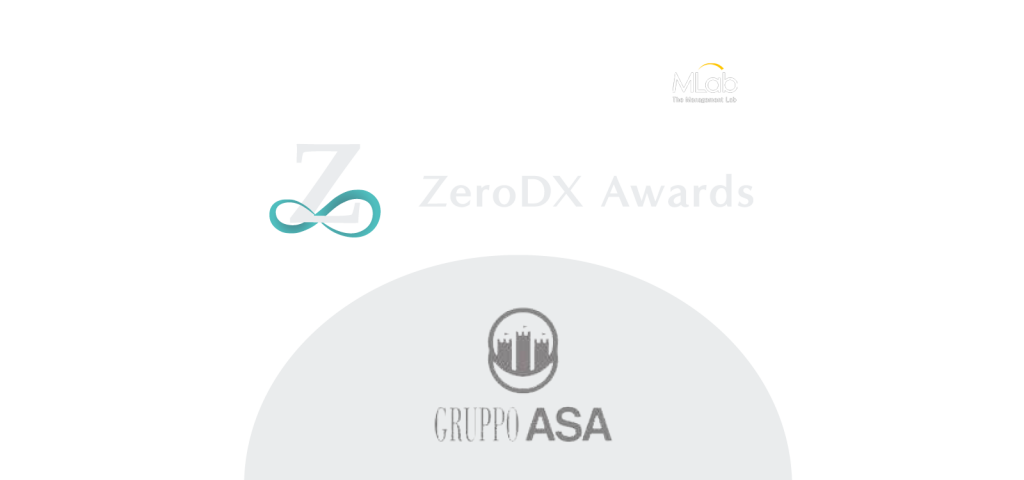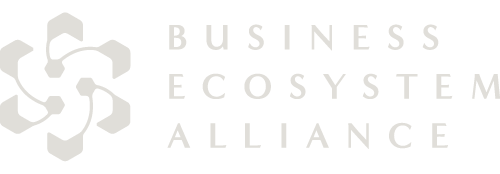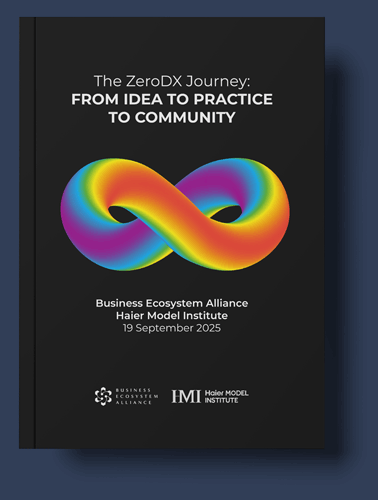
Manufacturing as an ecosystem of entrepreneurial innovation at ASA Group
ASA Group is a metal packaging company, born about 65 years ago in the small Republic of San Marino with a substantial history of growth and expansion that led it to 7 production sites with a total turnover of 135 million euros exclusively reached through its core business in the production of tinplate steel cans. The group operates in four countries: the Republic of San Marino, with one production site; Italy, with four production sites fairly distributed across its national territory; and Switzerland and England, with one site each. ASA employs 500 people and collaborates with a large network of partners and suppliers, such as drivers for Logistics or technological counterparts.
After several years of disappointing performance and the challenges caused to manufacturing by COVID-19, ASA Group identified Haier’s RenDanHeYi as the only progressive organizational approach with the characteristics, level of formalization, and concrete applicability to respond to their business challenges.
Many aspects of Haier’s RenDanHeYi attracted ASA Group’s interest:
- Distributing autonomy. Its intrinsic idea of bounded autonomy and responsibility represented by Micro-Enterprises (ME) looked like a perfect mechanism to let market dynamics, and actual customer needs get into ASA and reorient its internal functioning. Micro-Enterprises’ accountability sounded ideal for nurturing that sense of responsibility equity owners already had, but that was missing in the rest of the organization. Transferring profit & loss autonomy and allowing an independent choice of the value proposition to teams lower in the hierarchy could let market forces get inside the firm and thus shift organizational culture and behaviors.
- Infusing agility. The rapid, deep, and unpredictable changes in the external environment demanded much higher agility levels. For example, dramatic volume cuts on the demand side in 2020 initially meant layoffs, but also the need to work longer hours and weekends for those left in the company some months later. In 2021, port closures and ship blockages due to the post-Covid logistics crisis in China implied raw material shortages and consequent price inflation. The war in Ukraine made energy provisioning harder and more expensive. Anticipating and timely acting on weak signals required a lean, adaptive, less monolithic governance. More autonomy within a common purpose could only be unleashed through a new organizational model.
- Unlocking human potential. Better tapping into human ingenuity, passion, and willingness to add value was another primary driver toward the RenDanHeYi. Haier’s philosophy and organizational model offered an opportunity to accelerate and shape ASA’s ongoing journey from a typical family-owned company toward a business administered by a class of professional managers with appropriate skills and entrepreneurial attitudes. At the same time, the RenDanHeYi represented a way to support ASA’s entire ecosystem of employees, partners, suppliers, and even external stakeholders impacted by its business. The project could help them achieve stronger results, find broader room for decision-making and self-realization, develop new competencies, and secure financial upsides connected to customer outcomes.
- Formalizing an experimental approach. Both before and during ASA’s RenDanHeYi transformation, an explorative, iterative, participative, and pilot-based intervention model became the standard for the Group to empower a broad portion of the employee base to pick, validate, diffuse, and scale new practices and behaviors.
- Fostering information symmetry. No organizational or cultural leap would have been possible without a parallel growth in transparency and confidence regarding internal information sharing. Awareness, expertise, and data were preconditions for effective decision-making and action at the edges. In line with ASA’s existing O&I (Operation and Intelligence) alignment meeting, information symmetry had to include market trends, detailed company performance, emerging opportunities, and threats.
- Getting over managers. Last but not least, a form of self-management with employees picking and coordinating their work as peers instead of being commanded and controlled by a manager resonated much more with the kind of culture role-modeled by ASA’s owners and senior management.
Designing and rolling out a new entrepreneurial organizational model inspired by Haier’s RenDanHeYi has been selected as one of the outcomes included in ASA’s multiyear strategic plan. Boundaryless’ support became an enabler of this long-term transformation project required to help a structured manufacturing player gradually and confidently experiment with radical new constructs through three pilots.
Each pilot has been chosen as an archetype, a representative, and a template for addressing and solving a recurring scenario in ASA’s business:
- Logistics. Tapping into the group’s experience in moving large volumes of large products, ASA’s former Logistics department started offering its services to internal units (internal logistics) and the market (external logistics). This is an example of a Shared Service Platform making itself self-sustaining by exposing its service catalog, tracking value exchange with other nodes, and attracting revenues directly from clients to balance costs and potentially become margin-positive. Actual transportation services (e.g., drivers) remain external partners selected and orchestrated by the Logistics ME. This Micro-enterprise is among the first attempts of ASA Group to move from a product to a service focus and from functional departments as cost centers to entrepreneurial units as revenue centers. The profit newly generated by the unit is distributed among the owner and two other colleagues.
- Digital Printing. Traditional offset-based printing was revamped through innovative digital technologies co-created with an external partner to offer quicker, more personalized, and more flexible services to every internal and external counterpart needing to customize the appearance of tinplate cans. The newly formed team detached itself from ASA’s core business (of producing cans) to enjoy all the rights, benefits, and freedom of a Micro-Enterprise funded and incubated by the Group. Digital Printing shows how a Micro-Enterprise can be leveraged to incubate a new revenue stream by extracting part of a core productive process from the firm to maximize its chances of generating competitive advantage and growth through disruptive solutions. Its owner gave up managing one of ASA’s most essential plants (with over 150 colleagues) to start a new business venture from scratch.
- Oil Millers. An Ecosystem Micro-Community (EMC) that developed a new commercial proposal involving, connecting, and aligning the action of multiple units (for example, Accounting and Finance, Manufacturing, Pre-Printing, Logistics, etc.) to investigate, capture, and address the needs of a specific customer segment (olive oil millers and bottlers). Due to the freedom allowed to nodes in the RenDanHeYi, the EMC decided to select and sell both products offered by ASA and other vendors. After much reflection, the EMC has been coupled with a new Micro-Enterprise under the same name and the responsibility for customer intelligence, offering development and sales. The Oil Millers EMC dramatically reinforced ASA Group’s attempt to become more customer-centric and tinkered with the many tradeoffs necessary to optimally balance manufacturing and sales priorities. Micro-enterprise creation in manufacturing tends to demand relevant (multi-million) capital investments by the incubating company / Industry Platforms to cover raw materials, production, and R&D costs. The relevant amount of funds required influenced organization design regarding the optimal level of unbundling and rebuilding the firm reached. For example, the procurement and capital allocation for source materials (tinplate steel for the Digital Printing ME, externally acquired products for the Oil Millers EMC, etc.) have been left under the group’s responsibility to get lighter, simpler, and less capital-intensive entrepreneurial units.
In addition to searching for a recurring and replicable archetype, pilots have been selected by looking for colleagues with an entrepreneurial mindset and the personal interest to experiment with a new Micro-Enterprise owner role.
A peculiar support in the definition of both MEs and EMCs has been provided by the AFC (Accounting & Finance) team. Their consulting advice enabled ASA and future entrepreneurial teams to collect past costs and performance data, produce forecasts, and anticipate the impact of profit-sharing decisions. More broadly, up-to-date, accurate indications about all financial aspects represent an unavoidable support for ME / EMC creation and management. Similar services must be eventually automated through appropriate processes and technology to have a scalable implementation.
ASA’s Micro-Enterprises and EMCs have been designed to achieve the following outcomes:
- A distinct profit & loss responsibility. Each Micro-enterprise has to manage its revenues and costs sustainably and credibly.
- Strategic autonomy. Picking and refining the best value proposition is the responsibility of each node. For example, the Oil Millers EMC could decide which product to sell, the pricing, and the go-to-market strategy, even if that meant offering items that hadn’t been produced by ASA or that didn’t fall within the Group’s core business. “Bag-in-box” (containers for the transportation of liquids) products emerged as an attempt to capture and serve unmet customer needs. Strategic autonomy also includes moving the attention from optimizing internal processes to creating a longer-term, premium relationship with customers through a deeper reflection on each ME’s value proposition. The Digital Printing team spent reasonable time and effort to clarify how it could turn a technology-supported process into capabilities that uniquely resonated with the market.
- Funding and support from the group through VAMs. The value proposition, vertical and horizontal leading targets, investment and resource needs, and value-sharing mechanisms are negotiated with the company through VAMs (Valuation Adjustment Mechanisms, a bet-on agreement through which a company invests in another one) investment contrato optimize the overall portfolio of services and avoid cannibalization or excessive duplication. A careful balancing effort lets Micro-Enterprises scale without impacting the existing business or other units. While the Group must still be consulted through a negotiation, Micro-Enterprises no longer need hierarchical approval from the top for most of their choices, instead taking over the skin in the game connected to both action and results.
- Industry Platforms to nudge a smooth and peaceful transition. Industry Platforms have become the vehicle, on one side, to guarantee MEs distributed success and, on the other one, to maintain sufficient central coherence and brand protection in support of the company’s strategic plan. Especially during the necessary transition, they determine the speed, the amount of risk-taking, and the intensity the company exerts in validating and adopting new organizational constructs. They also took responsibility for avoiding undesired friction at the point of contact between the RenDanHeYi and traditional organizational mechanisms such as for two colleagues, one receiving profit sharing from the newly created ME he/she is part of and his/her nearby peer only getting a much lower and static base salary. In addition to capital allocation, Industry Platforms in ASA also fill the knowledge and expertise gap required for creating Micro-enterprises by owners without entrepreneurial experience.
- A unique alignment mechanism through EMCs. Not only VAMs but even more EMC Contracts are leveraged by ASA to elicit and align the potentially conflicting interests of multiple MEs or pre-existing units. For example, the Oil Millers EMC desired exclusive access over its customer segment, thus limiting some of Manufacturing's go-to-market freedom. Agreeing on such a condition has been possible through the profit-sharing agreement encoded in the EMC Contract. The profit percentage assigned to each node is proportional to its contribution’s strategic relevance (i.e., capital or access to clients).
- Total freedom in service delivery. Once objectives and investments have been locked in VAMs and EMC Contracts, no details have to be shared with or approved by the Group regarding how Micro-Enterprises or Ecosystem Micro-Communities operate to reach the agreed-upon targets. Industry Platforms can offer suggestions in case of stumbling blocks or unexpected market challenges, but responsibility remains in the node’s hands, allowing human creativity and ingenuity to be expressed.
- A new go-to-market responsibility. Exposing pre-existing internal processes or new products to the market usually requires the elaboration and execution of a previously missing strategy to identify, reach, convert, and successfully serve customers. Such an interface between employees and users increases early feedback, value co-creation, and internal capability building in alignment with Haier’s Zero Distance concept. In the case of ASA, go-to-market constitutes a subtle area of collaboration and partial overlap since customers are shared between the old and the new RenDanHeYi-based organization.
- Work allocation is in the hands of the Micro-Enterprise. Micro-enterprises receive the opportunity and responsibility to select, attract, and maintain the competencies/team members to execute their value proposition. New colleagues are invited to negotiate their conditions for joining MEs, including potential access to profit sharing.
- Profit-sharing mechanisms and customer-paid salaries. Part of the margins produced by Micro-Enterprises and Ecosystem Micro-Communities remain and can be arbitrarily distributed within them. The percentage of withheld profit depended on the level of risk, investment, and support by other units the new node requires for success. The higher the support from ASA, the more significant the portion of profits returned to the Group. Micro-Enterprises and Ecosystem Micro-Communities could decide how this added value should be distributed among team members (MEs) or other nodes (EMCs). Still, profit sharing and distinct profit & loss responsibility imply that employee salaries are now paid directly by customers.
During 2024, the organizational design described above has been translated into practice with impressive results in a matter of a few months. Some highlights in terms of quantitative returns:
- In a very competitive business environment, The Logistics SSP not only repaid its costs in full but started to generate positive margin (10% circa) by commercializing its services to the market and validating entire new business models (e.g., digitalizing warehouse management for some of its largest couriers).
- Digital Printing is winning its competition by opening the door to a much more flexible, efficient, and personalized (e.g., special 3D effects, with more colors and for smaller requests) printing service. It has also created an innovative source of revenues through royalties related to the sales of digital printers in partnership with an external provider. The expected YoY revenue increase is way over 120%, also thanks to installing a second, more advanced digital printer.
- In a customer-centric fashion, The Oil Millers EMC started generating revenues by bringing to the market the first new product not sold by ASA Group and achieved a YoY revenue increase near 15%. Even better performances both in terms of revenues and margin are expected for the second half of the year when the commercial campaign will reach its peak.
3 more pilots are also now being created in the following areas:
- ASA Group acquired one of its competitors (Ceredi), and it is transforming into a new ME focused on extreme customer experience and service personalization, low churn, and agile R&D to be gradually exported to the rest of the group. Ceredi's former owners and managers have become ME owners and are involved in the design of new organizational dynamics that can be replicated in future M&A activities.
- Piattino is another product development and commercialization ME connected to the design, launch, and commercialization of a sustainable, reusable, durable, convenient tin plate for consumers. A former employee and his team have been trained and helped build their ME by signing a VAM contract.
- Finally, zero distance dynamics will be introduced in one of ASA Group's most relevant plants. In addition to cooperating with other MEs and EMCs, its blue collars and managers will explore self-management and customer-centricity applied to traditional procurement, planning, and manufacturing processes intending to replicate their lessons learned to all the other plants.
ASA’s achievements recognised in the award include:
- The current multi-year strategic plan was developed inclusively with the participation of nearly 50 employees from different functions, locations, and levels of seniority. The plan's implementation has also been distributed to all the individuals involved.
- The company transitioned from a pure focus on the product to a growing attention and centrality of customers. The first responsibility of the Oil Millers EMC is to be the single point of contact with customers, with the goal of understanding and fulfilling their needs by reorienting and orchestrating internal services. Every new ME is directly refining and validating its products and services with customers (this is true even for Logistics).
- It dismantles internal hierarchy and command and control processes by distributing exceptional power to MEs and EMCs. Such new organizational constructs can decide their strategy, goals, investments, teams, and profit sharing in negotiation with the group through VAMs. The teams have full autonomy (also on P&L) once the VAM has been signed. Their amount of autonomy is very extensive in terms of budgets (tens of millions of euros, in some cases, and the most strategic areas in any case)
- The board (especially the General Manager and the Head of Marketing and Sales) is directly engaged in re-designing internal processes and practices in collaboration with their colleagues. The new design has been co-created and iterated multiple times by including everybody's perspective and expectations
- MEs and EMCs are substantially self-managed, with intrapreneurs guiding and facilitating more than bossing others
- Employees are concretely treated as entrepreneurs both due to the amount of decisional power they receive and the possibility to benefit from relevant profit sharing retained by MEs and EMCs. Profit sharing is only connected to the ME /EMC performance, it is uncapped, and it comes in addition to traditional MBOs / Variable Pay.
- In addition to establishing new customer-centric micro-enterprises, ASA Group is prototyping and implementing many-to-many contracts (EMCs) to reorient the initiative of multiple nodes (Logistics, Sales, Manufacturing, Legal, IT, HR, etc.) around market drivers. The EMC is used as an innovation pillar.
- The group is directly infusing capital and resources in VAMs and EMCs to protect, incubate, and accelerate new ventures
- The progress of each ME/EMC is measured and discussed each month through a series of KPIs / Reports provided as a service by the Finance team (in exchange for a portion of revenues/profit)
- Results and challenges are transparent also for colleagues not yet involved in current pilots.
- More than 50 colleagues (10% of the organization) have received RenDanHeYi training. A larger group of employees has been involved in lighter onboarding sessions.
- The internal structure is getting flat, with all ME / EMC leaders reporting directly to the board.


